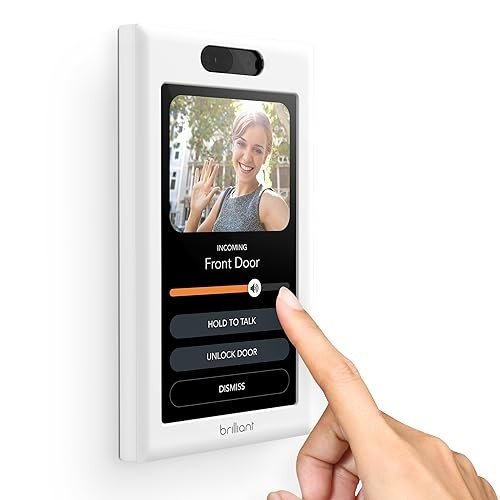Interior Lighting in the UK: A Comprehensive Guide
Interior lighting plays a vital function in developing an atmosphere, boosting performance, and revealing personal design within homes and organizations. In the UK, where the weather can be unforeseeable, efficient lighting is not just about aesthetic appeals but also about making spaces feel warm, welcoming, and useful. This post dives into various elements of interior lighting, incorporating types, trends, ideas, and frequently asked concerns.
Understanding the Importance of Interior Lighting
Lighting is frequently thought about the backbone of interior design. It affects mood, functionality, and the viewed size of areas. The ideal lighting can:
- Enhance the architectural functions of a room.
- Highlight artwork and decoration.
- Improve security and security.
- Impact productivity in work spaces.
- Produce a comfortable atmosphere for relaxation.
Types of Interior Lighting
Reliable lighting style generally integrates three primary types of lighting: ambient, job, and accent.
1. Ambient Lighting
This is the primary source of light in a room, supplying total illumination. Typical sources consist of:
- Ceiling-mounted fixtures
- Chandeliers
- Recessed lighting
- Soft wall sconces
Ambient lighting creates a structure from which other lighting types can construct upon.
2. Job Lighting
Task lighting focuses on specific locations to facilitate activities such as reading, cooking, or working. This type of lighting helps to lower eye strain and can significantly affect functionality. Typical sources include:
- Desk lamps
- Under-cabinet lights in kitchens
- Checking out lamps beside beds
- Mounted lights focused on work surfaces
3. Accent Lighting
Accent lighting adds drama and highlights particular objects or locations, such as artwork or architectural functions. This type of lighting can create visual interest and depth in a space. Sources include:
- Picture lights
- Decorative lamps
- Uplighters
- LED strip lights along racks
Using a mix of these lighting types can lead to a well-balanced and multifunctional area.
Popular Lighting Trends in the UK
The interior lighting landscape in the UK continues to evolve, affected by design trends, innovation, and customer choices. Here are some popular patterns to view:
- Smart Lighting: The development of smart innovation has changed how individuals handle lighting in their homes. Smart bulbs and systems like Philips Hue allow users to control brightness and color temperature through their mobile phones.
- Minimalist Designs: Sleek, simple styles that blend effortlessly with interiors are dominating the marketplace. Pendant lights with delicate frames, LED strips, and geometric shapes are especially trendy.
- Industrial Lighting: This trend showcases raw, bare materials. Metal fixtures and Edison bulbs use a vintage touch that is both trendy and practical.
- Eco-Friendly Options: With increasing awareness of sustainability, numerous consumers are turning to energy-efficient LED alternatives and fixtures made from sustainable materials.
Tips for Effective Interior Lighting Design
Designing a reliable lighting strategy needs thoughtful factor to consider of numerous elements. Here are some suggestions:
- Consider the Purpose of Each Room: Every space has a various function. Consider what activities will occur and what type of lighting will support those activities.
- Layer Lighting: Employ several kinds of lighting within a room to produce depth and flexibility. Integrate click home page , task, and accent lighting to improve both aesthetics and functionality.
- Use Dimmers: Dimmers allow for control over brightness levels, making it possible for users to change lighting according to state of mind and time of day.
- Incorporate Natural Light: Make the most of natural light sources like windows. Use light, reflective colors for walls and home furnishings to maximize brightness.
- Consider Color Temperature: Different color temperatures (measured in Kelvins) develop various atmospheres. Warmer temperature levels (around 2700K-3000K) are relaxing, while cooler temperatures (4000K+) provide a more scientific or energetic feel.
Interior Lighting Mistakes to Avoid
To create a well-lit area, it's important to avoid common lighting risks. Here are some mistakes to look for:
- Underestimating Wattage: Insufficient wattage can lead to dim, unwelcoming spaces.
- Disregarding Scale: Fixtures that are too small for a room can look out of location, while extra-large fixtures can overwhelm a space.
- Over-reliance on Ceiling Lights: Relying exclusively on overhead lighting can develop uninviting shadows; balance with additional lighting types.
- Poor Placement: Misplaced lights can develop locations that are too intense or too dark. Strategy placements attentively.
FAQ Section
1. What is the difference between warm white and cool white light?
Warm white light (2700K to 3000K) develops a relaxing, inviting atmosphere, perfect for living rooms and bedrooms, while cool white light (4000K to 5000K) is more suited for work areas as it boosts concentration and clearness.
2. How can I make the most of natural light in my home?
To make the most of natural light, use light-colored walls, tactically location mirrors to reflect light, and go with sheer window coverings that permit sunlight to pass through.
3. How do I select the best light?
Think about the size of your space, the design of your decor, and the function of the area. Ensure Additional Info of fixtures complements the room and matches the general visual.
4. Are LED lights much better than traditional bulbs?
Yes, LED lights are more energy-efficient, have a longer life-span, and can provide a range of color temperature levels, making them a more sustainable lighting choice.
5. What should I do if certain locations of my room remain too dark?
Consider including extra task or accent lighting to lighten up those locations. Floor lamps, wall sconces, or perhaps tactically positioned table lamps can help ease dark spots.
Interior lighting is an essential element of home and company style across the UK. Understanding the different types, current patterns, and best practices can assist residential or commercial property owners in creating spaces that are not only trendy however likewise functional. With thoughtful factor to consider and planning, efficient lighting can change any environment, enhancing both ambiance and functionality for years to come.

